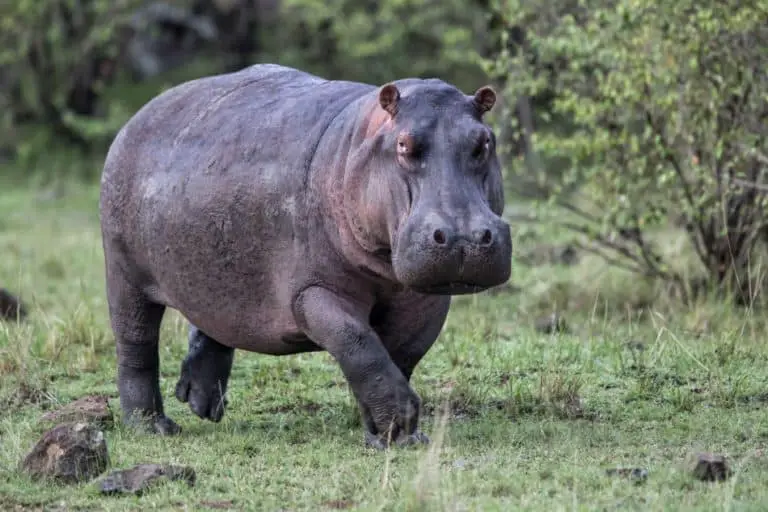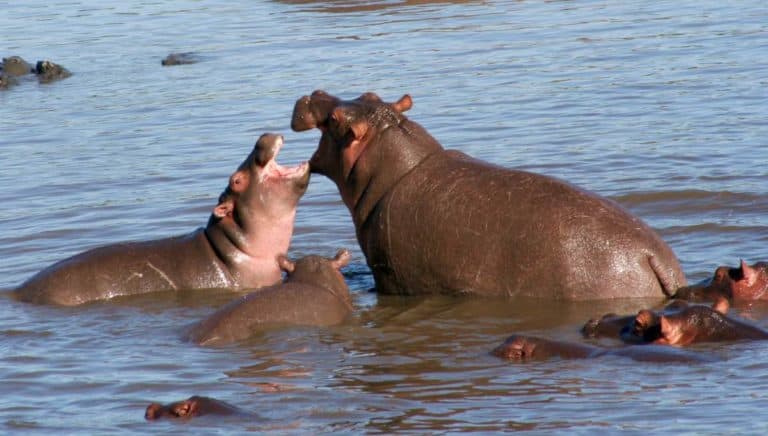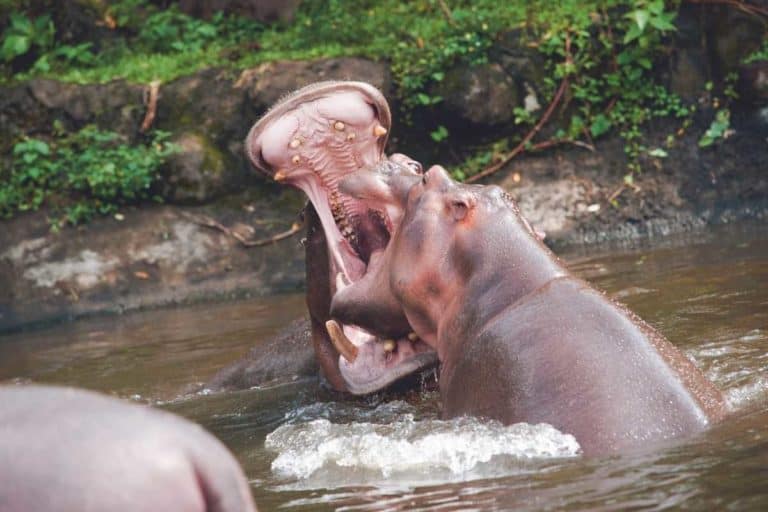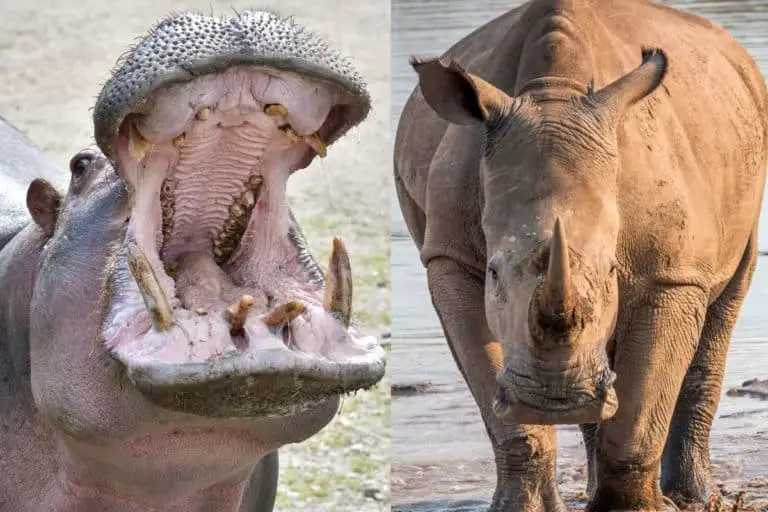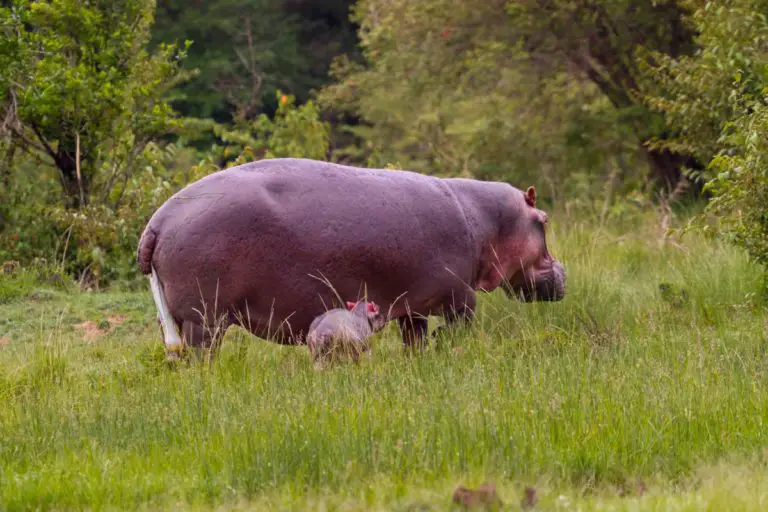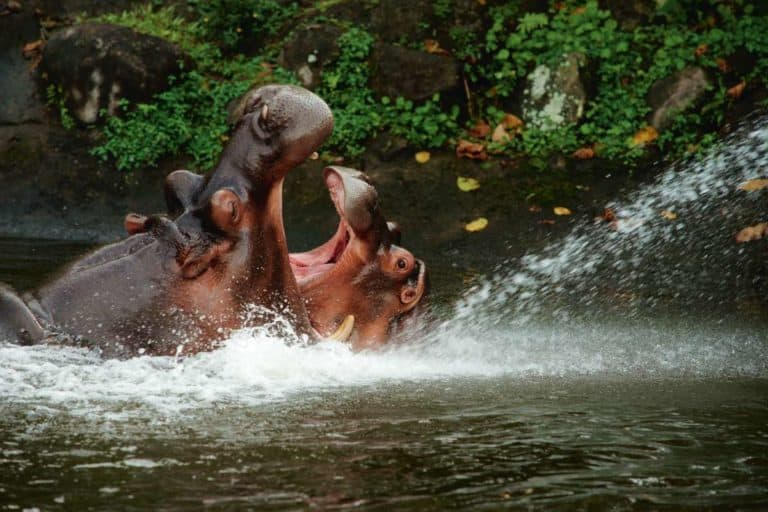37 Interesting Facts About Hippos that You Didn’t know
Did you know that hippos are the third largest land mammal globally? Or that their closest living relatives are whales and dolphins?
Hippos are fascinating creatures, and this post will teach you some interesting facts about them that you may not have known before. So keep reading to learn more!
1) Hippos can’t jump.
Hippos can’t jump. Hippos don’t jump because their vertebrae are fused together, making it impossible for them to bend their back like other mammals such as cats and dogs. If they tried jumping, they would cause severe damage to their backs and could even die!
2) They sweat blood… kind of.
Hippopotamuses secrete a reddish substance from their skin which is actually no sweat but rather a mixture of blood and other body fluids. This secretion helps keep the hippos cool under the hot sun and acts as a natural sunscreen.
3) They are one of the deadliest animals in Africa.
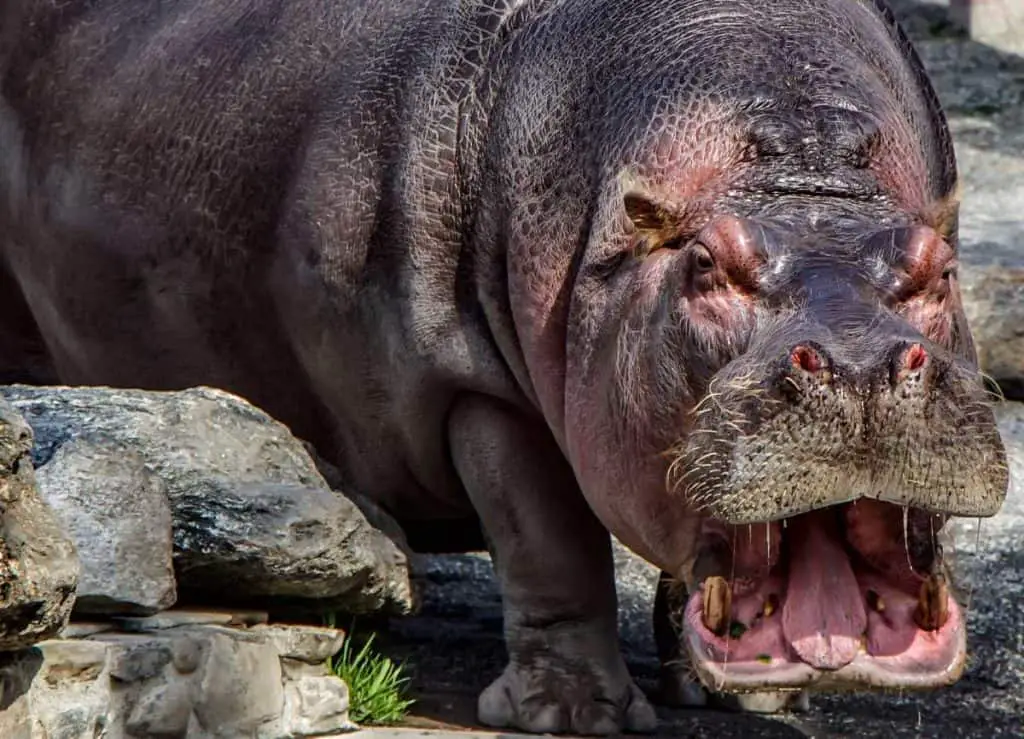
Despite their cute and cuddly appearance, hippos are actually one of the deadliest animals in Africa. Hippos kill more people every year than lions, elephants, and buffaloes combined! This is because they are territorial and can become very aggressive when threatened.
4) They can weigh up to two tons.
Hippopotamuses are the third largest land mammals globally, after elephants and rhinoceroses. They can weigh up to two tons and are speedy runners.
5) Their closest living relatives are whales and dolphins.
Hippopotamuses are not related to horses; they are more closely related to whales and dolphins than horses. This is because hippopotamuses share a common ancestor with these marine mammals.
6) They’re nocturnal.
Hippos spend most of the day sleeping in rivers and come out at night to graze on grasslands. During the day, they rely on their thick skin to protect them from the sun’s heat.
7) They have poor eyesight but a great sense of smell.
Hippos have poor eyesight but a great sense of smell. Their eyes are located on the top of their heads, making it difficult to see what is directly in front of them.
8) Hippos are herbivores.
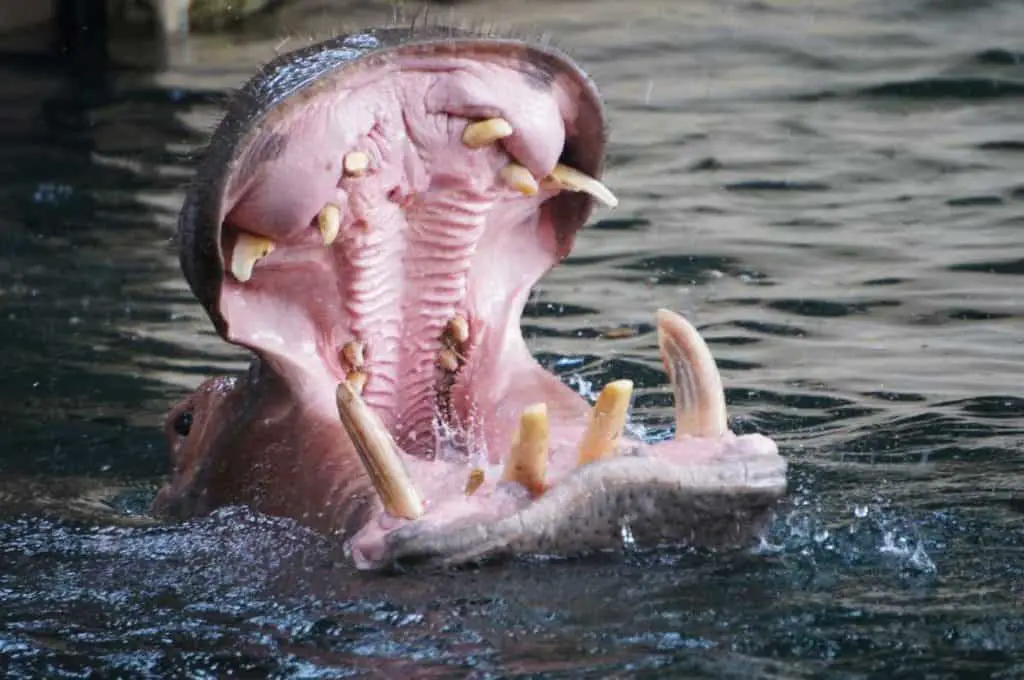
Despite their reputation for being aggressive, hippopotamuses have actually planted eaters (herbivores). They can consume almost 100 pounds of grasses every day to help them get the nutrients they need!
9) Baby hippos love milk… except when they don’t.
Hippo calves are very dependent on their mothers for milk during the first few months of their lives. However, some calves will refuse to drink milk and only eat vegetation.
This is because hippos are born with a high level of bacteria in their stomachs, which helps them digest vegetation from an early age.
10) They can live up to 45 years.
Hippos can live up to 45 years in the wild, although the average lifespan is around 35 years. They are susceptible to several diseases, such as anthrax, river blindness, and schistosomiasis.
11) They are considered a vulnerable species.
Despite their large population, hippopotamuses are considered a vulnerable species because of the high number of them killed by humans each year. This is primarily due to their habit of living near humans and their tendency to raid crops.
12) They are semi-aquatic animals.
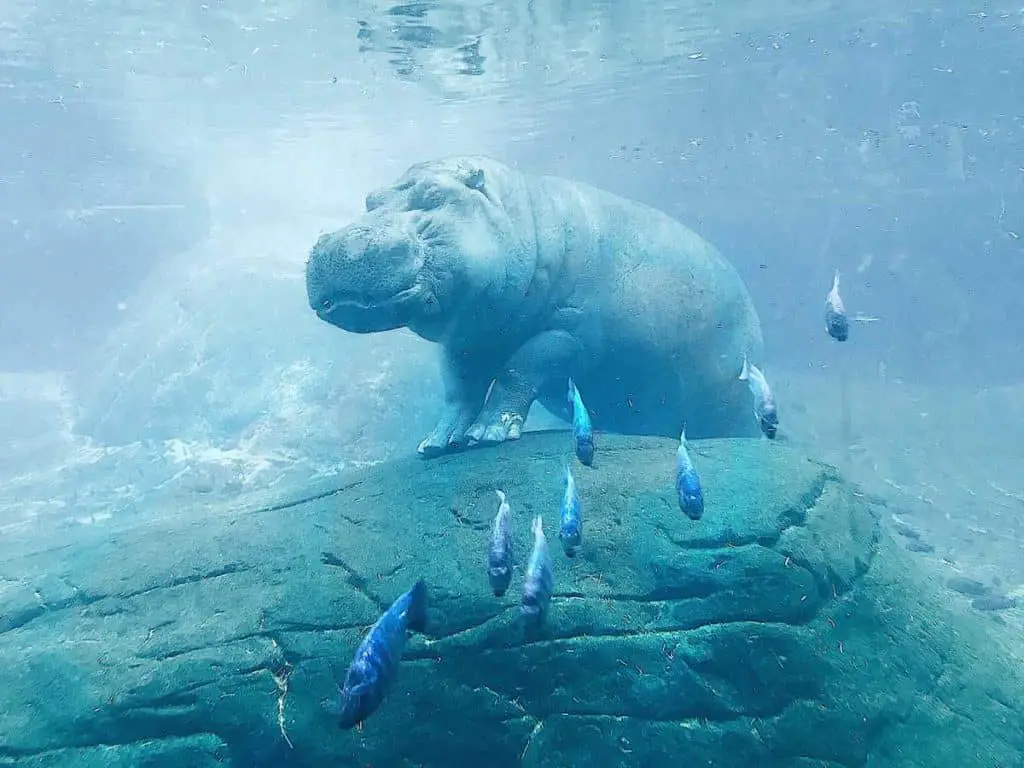
“hippopotamus” is derived from the ancient Greek words for “river horse.” This is because hippos spend most of their lives on water and land. During floods, they will often leave the rivers and travel overland to find new habitats.
13) Hippos sleep between four and six hours a day.
Hippos spend most of their day sleeping in the water to stay calm and hide from predators.
They only sleep between four and six hours a day but can go up to three days without eating when food is scarce. Hippos will usually eat grasses along the riverbank when the floodwaters recede.
14) The biggest threat to hippos is humans.
The biggest threat to hippos is humans. Hippos are killed by humans for their meat, ivory tusks, and skin. They are also threatened by habitat loss and the illegal wildlife trade.
15) There are two species of hippo.
There are two species of the hippopotamus: the Pygmy hippo (which is smaller than its cousin) and the common hippo (which is larger and has a “thicker” head).
16) Hippos can store food in their mouths.
Like cows and sheep, Hippos can store food in their mouths when they eat. This allows them to keep eating when they submerge themselves in water or mud without worrying about the food falling out of their mouths.
17) The most enormous hippo was nearly 6 feet tall at the shoulder!
The largest hippopotamus ever found it measured almost 4,5 feet in height.
18) Hippos have tough skin that is nearly impenetrable.
A hippo’s tough, leathery skin helps protect them from crocodiles and other predators while they’re in the water.
However, this also makes it difficult for humans to kill them with spears or machetes.
The skin is so tough that it can often stop bullets!
19) Baby hippos are called “calf.”
Baby hippos are called “calfs” and weigh around 55 pounds at birth. The nurse from their mothers for up to one year and stay with their mothers until they are about two years old. At that point, they can fend for themselves and join Bachelor herds.
20) Hippos communicate with each other using sounds and gestures.
Hippos use a variety of sounds and gestures to communicate with each other. For example, they will grunt when they are happy, make clicking noises with their tongues when angry, and blow bubbles in the water when they are nervous.
21) They can run faster than humans over short distances.
When on land, hippos can run faster than humans over short distances! They can reach speeds of up to 30 miles per hour and maintain that pace for several minutes before getting tired.
22) Mother hippos do not eat their young.
Contrary to popular belief, mother hippos do not eat their young. Instead, they protect them from predators and teach them how to survive in the wild. This is one reason why baby hippos remain with their mothers for up to two years.
23) Their name means “river horse.”
The Greek word for hippopotamus is “hippopotamus,” meaning “river horse”! Hippos are often called this because they spend much of their time in the water and have a carnivorous diet compared to land-based horses. They also prefer to stay in places where the water is deep enough for them to completely submerge.
24) Hippos are not aggressive towards humans unless they feel threatened.
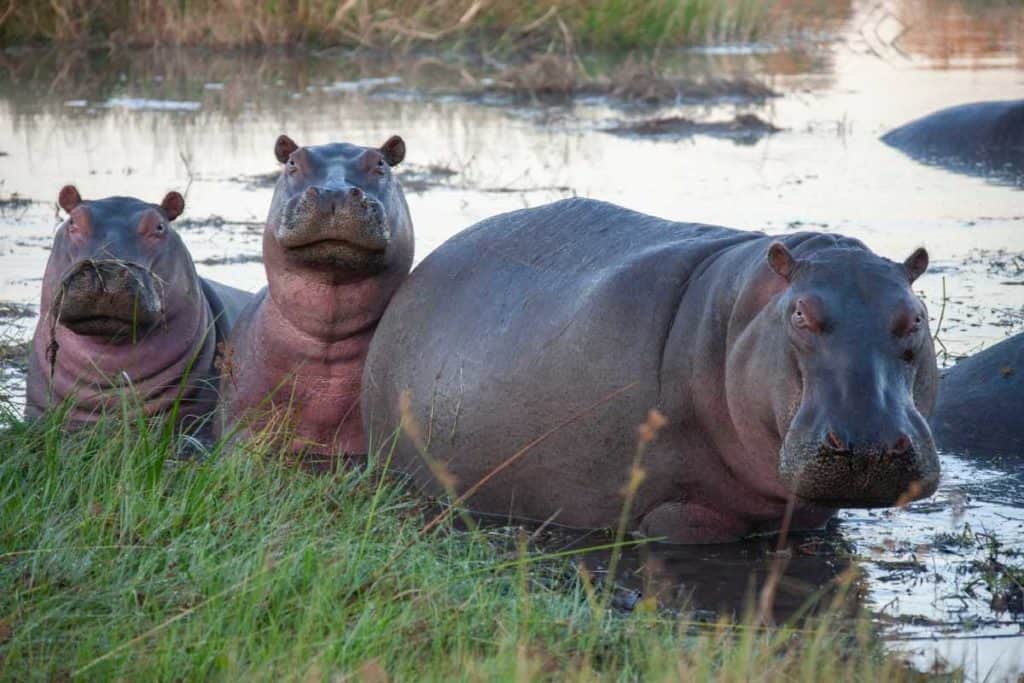
Hippopotamuses don’t attack humans unless they feel threatened! However, many people have been injured or killed by these creatures because they tend to get very angry.
25) Hippos have collided with boats and caused them to capsize.
Hippopotamuses have accidentally capsized boats in the past by running into them headfirst! This could be because they don’t hear approaching ships very well.
After all, they lack external ears and dense bodies. People are often thrown out of the boat and water when these collisions occur.
26) Hippos have been known to attack crocodiles when threatened.
Hippopotamuses have attacked crocodiles when they are threatened! They will charge at their prey, ram the croc with their mouths open, and trample them underfoot.
It is unknown if this behavior is learned or instinctual in hippos because both male and female adults have been seen participating in it.
27) They are found in Eastern Africa and the Nile River Valley.
Hippopotamuses are found in eastern Africa around the world! Their habitats include Uganda, Kenya, Ethiopia, Somalia, Sudan, Mozambique, Congo, DR Congo, Zambia, South Africa, Botswana, and Zimbabwe. The Nile River Valley is also home to a large population of hippos.
28) They are the third-largest land mammal in the world.
Hippopotamuses are the third largest land mammal in the world! Only elephants and rhinoceroses weigh more than these animals.
29) Hippos are very near-sighted.
Hippopotamuses are very near-sighted, so they use their strong senses of hearing and smell to find food! They also rely on mating calls at night to find suitable partners to mate with.
30) They use mud as sunblock and sunscreen.
Hippopotamuses use mud as sunscreen and sunblock! They coat their bodies in mud, blocking harmful UV rays from hitting their skin. This also helps them stay calm while they are hot from the sun.
31) The front teeth of hippos never stop growing!
The front teeth of hippopotamuses never stop growing because they are open-rooted! This means that they continually evolve throughout the animal’s life. Hippos use their teeth to chew on plants, which helps to keep them sharp.
32) They give birth in the water.
Hippopotamuses give birth in the water! The mother hippo protects her calves from predators by staying in the water safely. The calves nurse underwater and can stay under for 5 minutes at a time!
33) They sweat and breathe through the same hole in their body!
Hippopotamuses can sweat and breathe through the same opening on their skin! This is called a “thermal window,” allowing them to stay cool by sweating while they are hot. The thermal window also will enable them to have their nostrils closed underwater!
34) Hippos give birth every 2 – 3 years!
Hippopotamuses give birth every 2 to 3 years! The gestation period is about 8 months, and the mother hippo will protect her calf from predators for up to 2 years. Hippos can have up to 4 calves at a time.
35) They have a flexible upper lip to grab grass and leaves.
Hippopotamuses have a flexible upper lip to grab the grass and leaves on the ground! They have large teeth to help them chew up what they eat to be digested more easily. Their favorite foods include watermelons, sugar cane, and sweet potatoes.
36) They have tough skin because they spend so much time in the water!
Hippopotamuses have callous skin but not scales like fish! This allows them to stay calm and dry while in the water, and it protects their skin from the plants they eat. Their tough skin also helps to protect them from predators.
37) Hippos are considered an agricultural pest in some areas!
Hippopotamuses are considered agricultural pests in some areas where they live! They often eat the plants that people grow to feed their livestock, which can be a big problem. Hippos can also damage boats and bridges with their weight.
Now that we know a little more about these amazing animals, we can see why they are considered one of the most dangerous mammals in the world! Their size and strength make them very dangerous to humans and other animals. But, they are also fascinating creatures that are worth getting to know better. Thanks for reading!
